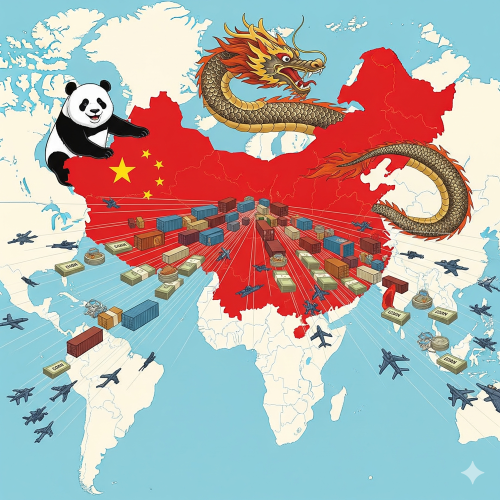What risks do South American countries face by relying on China as their largest export market?

South American countries relying on China as their largest export market face significant risks, including economic concentration risk, vulnerability to China's economic slowdown, and de-industrialization.
This dependency, while fueling a commodity boom, leaves their economies vulnerable to external shocks and reinforces an outdated trade model.
Economic Concentration and Price Volatility
A primary risk for South American nations is the extreme concentration of their exports to a single market and in a narrow range of products. China's demand for raw materials—specifically soybeans, iron ore, and copper—has made it the top trading partner for Brazil, Argentina, and Chile.
-
Lack of Diversification: This reliance means that the economies of these South American nations are disproportionately tied to China's economic health. If China's demand for a specific commodity were to suddenly drop, the economic fallout for the exporting country would be severe. For example, a downturn in China's construction sector could directly reduce its demand for Brazilian iron ore, negatively impacting Brazil's economy.
-
Vulnerability to Price Fluctuations: South America's export revenue is highly susceptible to the volatile swings in global commodity prices. Since China is the main buyer, its purchasing decisions have a direct impact on the prices of these raw materials. When China’s economy grew at a blistering pace, South American countries experienced a commodity-fueled bonanza, but a slowdown in China can cause prices to plummet, leading to economic instability and reduced government revenue. This leaves countries with less money to fund public services and infrastructure.
The Threat of De-industrialization
China's trade relationship with South America has been criticized for reinforcing an unbalanced economic model reminiscent of the colonial era. South American countries export raw materials with little to no processing, while they import a wide array of cheap, finished manufactured goods from China.
-
Suppressed Domestic Manufacturing: The influx of inexpensive Chinese imports, from textiles to electronics, can outcompete and undermine local industries. This makes it difficult for South American nations to develop their own manufacturing sectors and create a more diversified, value-adding economy. It reinforces their role as a raw material supplier, rather than a producer of finished goods.
-
Limited Job Creation: A study from the Inter-American Dialogue suggests that exports to China create fewer jobs per dollar than exports to other countries. This is because raw material extraction is often capital-intensive and less labor-intensive than manufacturing.
Vulnerability to China's Economic Slowdown
Perhaps the most pressing risk is the direct correlation between the health of the Chinese economy and that of South American nations. China is currently facing economic headwinds, including a real estate crisis and a slowdown in consumer spending.
-
Direct Economic Spillovers: A slowdown in China’s economic growth has immediate and measurable spillovers on the economies of countries that rely on it for trade. The International Monetary Fund (IMF) has estimated that a 1 percentage point drop in China’s growth could reduce growth in countries like Chile and Peru by 0.2-0.3 percentage points, with potentially larger impacts if the slowdown leads to financial market turmoil.
-
Reduced Investment: As China's economy slows and its domestic debt rises, Chinese state-owned banks and companies have become more cautious about extending new loans and investments abroad. This could mean a significant reduction in the infrastructure projects that South American nations have come to rely on for development and growth.
In summary, the heavy reliance on China as an export market has made South America economically successful in the short term, but it has also created a dangerous dependency.
It leaves these countries vulnerable to fluctuations in commodity prices, hinders their long-term industrial development, and ties their economic fate to the unpredictable trajectory of the Chinese economy.
- Questions and Answers
- Opinion
- Motivational and Inspiring Story
- Technology
- Live and Let live
- Focus
- Geopolitics
- Military-Arms/Equipment
- Безопасность
- Economy
- Beasts of Nations
- Machine Tools-The “Mother Industry”
- Art
- Causes
- Crafts
- Dance
- Drinks
- Film/Movie
- Fitness
- Food
- Игры
- Gardening
- Health
- Главная
- Literature
- Music
- Networking
- Другое
- Party
- Religion
- Shopping
- Sports
- Theater
- Health and Wellness
- News
- Culture

